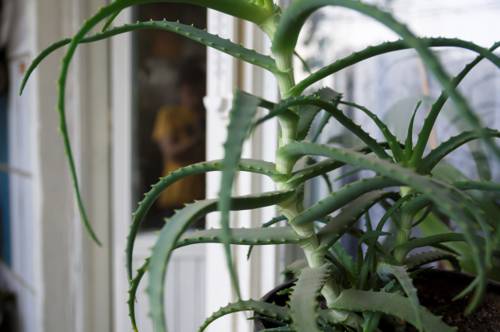
FAQ About Indoor Plant Nutrient Synergism

What is nutrient synergism in indoor plants?
Nutrient synergism refers to the interaction between two or more nutrients that results in enhanced absorption and utilization, promoting better plant growth and health. In indoor plants, this can mean that the presence of certain nutrients can enhance the efficiency with which plants absorb other essential nutrients, often leading to improved growth and vitality.

How do soil nutrients interact in indoor plants?
In indoor plants, soil nutrients interact through a process called nutrient synergism. This interaction can affect how well a plant absorbs and utilizes essential nutrients like nitrogen, phosphorus, potassium, calcium, magnesium, and others. For instance, the presence of mycorrhizal fungi can help enhance phosphorus uptake, which in turn may improve nitrogen use efficiency, demonstrating a synergistic relationship.

Why is nutrient synergism important for indoor plants?
Nutrient synergism is crucial for indoor plants because it optimizes nutrient uptake and utilization, which is essential for plant health, growth, and productivity. By understanding and leveraging these nutrient interactions, indoor plant growers can enhance plant growth, reduce the need for excessive fertilization, and prevent nutrient imbalances that could lead to poor plant health.

Can you provide an example of nutrient synergism in indoor plants?
An example of nutrient synergism in indoor plants is the interaction between calcium and boron. Calcium aids in the structural integrity of cell walls, while boron is crucial for cell wall formation and stability. Adequate boron levels can enhance calcium's effectiveness, leading to healthier plant tissues and overall improved plant growth.

How can I enhance nutrient synergism for my indoor plants?
To enhance nutrient synergism, ensure a balanced supply of nutrients in the soil by using comprehensive fertilizers that contain a mix of micro- and macronutrients. Soil pH levels should be checked and adjusted to optimize nutrient availability. Additionally, introducing beneficial soil organisms like mycorrhizal fungi can help facilitate nutrient interactions and improve synergism.

What are common signs of nutrient imbalances in indoor plants?
Common signs of nutrient imbalances include yellowing leaves, poor growth, leaf curl, discoloration, and dropping of leaves. Specific symptoms can vary depending on which nutrient is deficient or in excess. Regular monitoring of plant health and soil condition can help detect imbalances early.

Do indoor plants require the same nutrients as outdoor plants?
Yes, indoor plants generally require the same essential nutrients as outdoor plants, including nitrogen, phosphorus, potassium, calcium, magnesium, and trace elements like iron and manganese. However, the amounts and methods of delivery may differ due to factors like limited soil volume, light exposure, and growth environment.

How does soil pH affect nutrient synergism in indoor plants?
Soil pH significantly influences nutrient availability and synergism. At optimal pH levels (usually between 6.0 and 7.0 for most indoor plants), nutrients are more soluble and accessible to plant roots, enhancing uptake and interaction. Extreme pH levels can lock out certain nutrients, disrupting synergistic relationships and leading to deficiencies.

What role do micronutrients play in nutrient synergism?
Micronutrients play a critical role in nutrient synergism by participating in biochemical processes that enhance the uptake and utilization of macronutrients. For instance, manganese is needed for nitrogen assimilation, while zinc helps in the regulation of various enzymes that participate in metabolic processes and nutrient use efficiency.

How can indoor gardeners test for nutrient levels in soil?
Indoor gardeners can test nutrient levels in soil using DIY soil test kits available at garden stores, which provide quick results for common nutrients like nitrogen, phosphorus, and potassium. For more detailed analysis, they can send soil samples to professional agricultural laboratories, which can test for a broader range of nutrients and help interpret results to optimize nutrient synergism.

Can organic fertilizers improve nutrient synergism?
Yes, organic fertilizers can improve nutrient synergism because they often contain a diverse mix of nutrients, organic matter, and beneficial microorganisms that promote nutrient interactions. Organic matter improves soil structure and nutrient availability, thereby enhancing synergistic effects that can improve plant growth and health.

Is over-fertilization a problem for nutrient synergism?
Yes, over-fertilization can negatively impact nutrient synergism by causing nutrient imbalances or toxicities that interfere with nutrient uptake and interaction. Excessive levels of certain nutrients can prevent the absorption of others, leading to deficiencies despite high nutrient availability. Proper fertilization practices are essential to maintaining synergism.

What types of indoor plants benefit the most from nutrient synergism?
All indoor plants can benefit from nutrient synergism, but those with higher nutrient demands, such as flowering plants and fast-growing species, may see the most noticeable improvements in growth and health. Ensuring optimal conditions for nutrient interactions is beneficial across all plant types for maximizing their potential.

How does watering affect nutrient synergism in indoor plants?
Watering plays a crucial role in nutrient synergism by facilitating the transport of nutrients from the soil to the plant roots. Adequate watering ensures that nutrients are dissolved in soil water and accessible to plants, promoting effective uptake and interaction. Overwatering or underwatering can disrupt this balance, leading to nutrient deficiencies or toxicities.

Can lighting conditions affect nutrient interaction in indoor plants?
Yes, lighting conditions can significantly affect nutrient interactions since they influence photosynthesis and metabolic activities. Adequate light is necessary for the conversion of absorbed nutrients into energy and biomass, thus supporting synergistic relationships. Insufficient light may impair nutrient uptake and limit synergism.

Are there specific amendments to improve nutrient synergism in indoor plant soil?
Yes, specific soil amendments such as mycorrhizal inoculants, rock dust, and compost can enhance nutrient synergism by improving soil structure and fertility. These amendments introduce beneficial microorganisms and additional nutrients that can improve nutrient interactions and availability to plants.

What are the risks of ignoring nutrient synergism in indoor plant care?
Ignoring nutrient synergism can lead to suboptimal plant health and growth, including nutrient deficiencies or toxicities, poor plant vigor, inhibited flowering, and increased susceptibility to pests and diseases. Understanding and optimizing nutrient interactions can significantly enhance the overall well-being of indoor plants.

How do indoor plant nutrients differ from hydroponic nutrient solutions?
Indoor plant nutrients in soil depend on the natural breakdown and interaction of various soil amendments, whereas hydroponic nutrient solutions are carefully balanced liquids that provide plants with directly absorbable nutrients without soil. Hydroponics demands more precise management to ensure nutrient interaction and availability.

How can nutrient imbalances affect plant disease resistance?
Nutrient imbalances can compromise plant disease resistance by weakening plant defenses, disrupting cellular functions, and creating an environment that favors pathogen growth. Proper nutrient synergism helps strengthen plant tissues, enhancing their ability to resist infections and reducing susceptibility to diseases.
